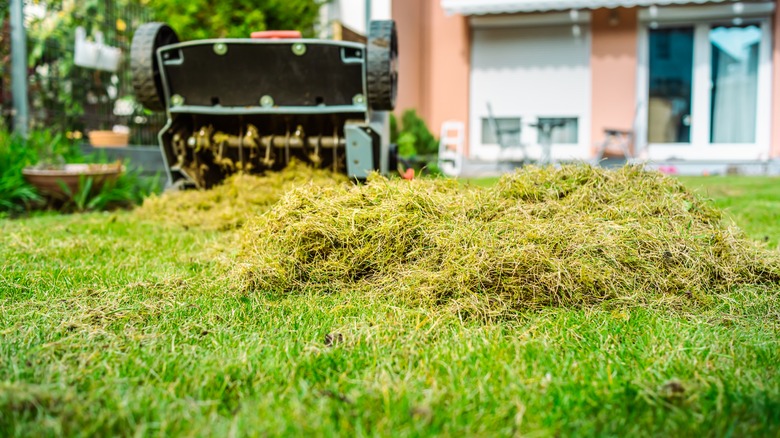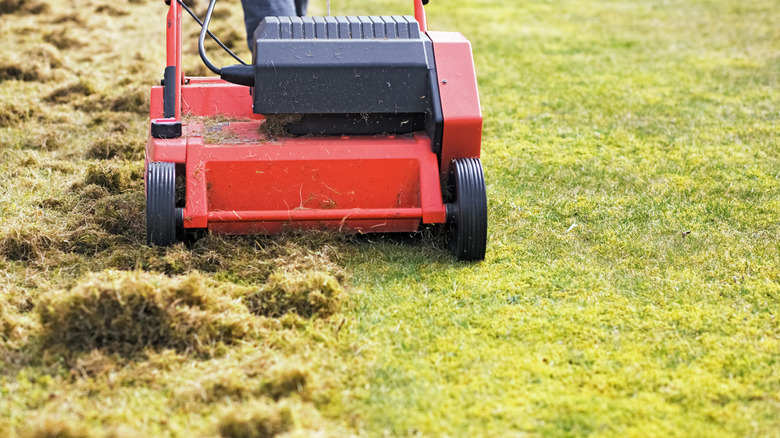How (And When) To Dethatch A Lawn For Healthier, Greener Grass
If your lawn is well established, chances are, it has some thatch buildup. Essentially, thatch is a layer of living and dead plant matter all tangled and woven together, sitting between the green and growing part of your grass and the soil's surface. It's formed as a result of plant matter being produced faster than it can decay. When too much builds up, it is detrimental to the health of your grass, so you'll need to take steps to dethatch your lawn.
Dethatching is best done with a vertical mower or power rake. You may be able to rent either or buy one from your local garden center or hardware store. The best time to power rake lawns is between August and October, as this is when your grass is in its peak growing season and will be able to recover quickly.
Thatch isn't necessarily a bad thing; a light layer can be protective, providing insulation against extreme temperatures and heavy traffic. But too much thatch can prevent water from reaching the grass roots and can harbor disease or burrowing yard pests. One diagnostic test you can perform is to walk on it. If it seems noticeably bouncy, it might be due to thatch buildup. Next, dig a two-inch-deep wedge out of the lawn and measure the depth of the thatch buildup you can see between the grass and the soil. A half-inch or less of thatch is ideal. Above that, you should start looking for dethatching equipment.
Choose your tools and prevent future buildup
When choosing a dethatching machine to rent, make sure you select one with fixed metal blades and not plastic or spring blades. The latter will be ineffective, wasting money and effort. Set the blades so that they bring up a small amount of soil with the thatch. If you've never used a vertical mower before, it might be a good idea to practice a bit in an area of the yard that is less visible. This will allow you to gauge how much thatch you're bringing up and how much turf thinning is occurring so that you can adjust your machine accordingly.
After you've dethatched your lawn, rake up the debris and either dispose of it or compost it. Composted thatch is actually excellent for adding nutrients to flower beds and vegetable gardens! You'll probably need to overseed your lawn afterward to make up for any thinning.
Dethatching can be a damaging process, so the best approach to thatch management is prevention. Excessive thatch is a result of factors that increase thatch development and decrease thatch decomposition, including planting certain grass species (vigorous growers such as Kentucky bluegrass can produce a lot of thatch), excessive use of nitrogen fertilizer, and poor soil aeration. Being thoughtful in your grass species selection and keeping up with lawn maintenance chores, such as annual core aeration, can help to keep thatch under control and increase grass density.

